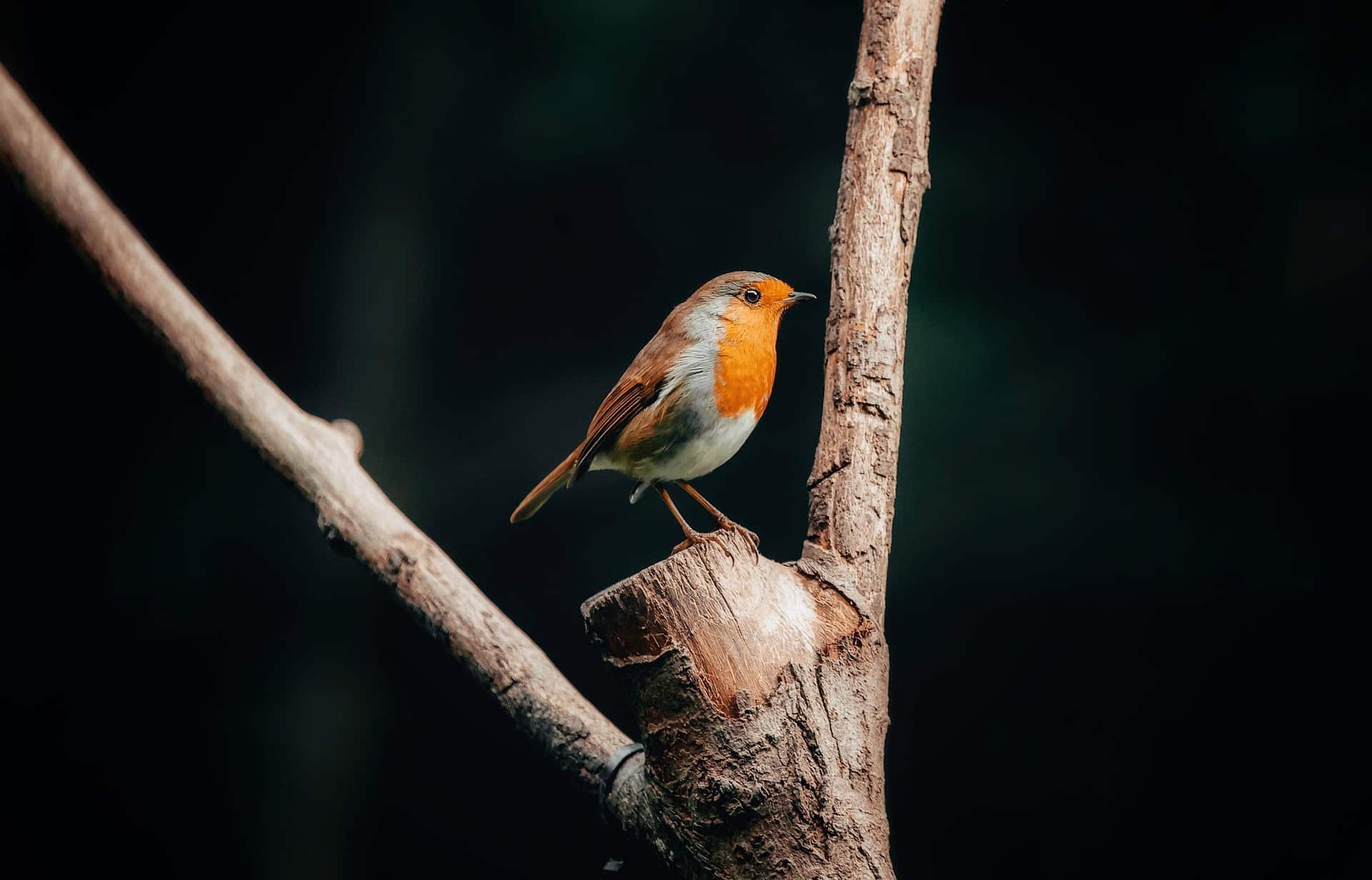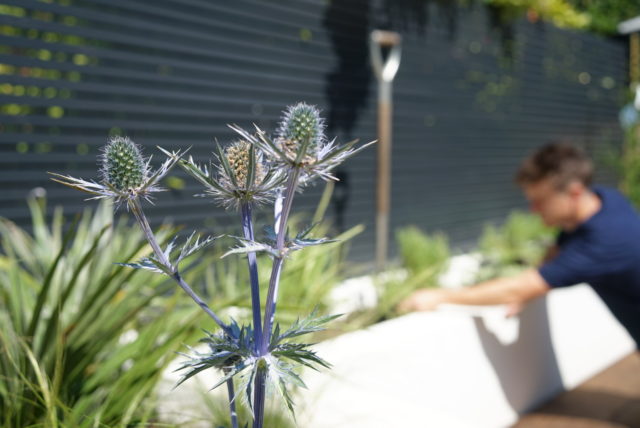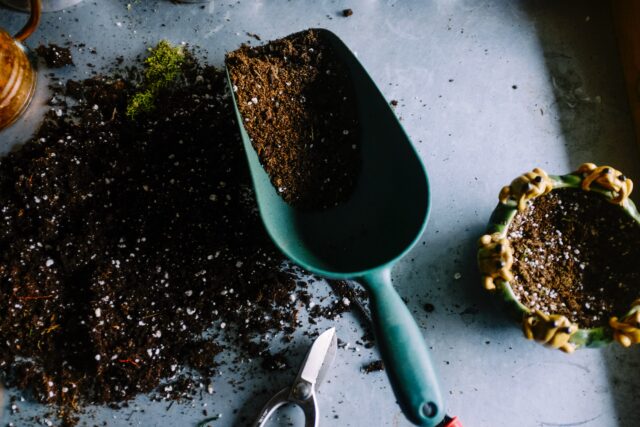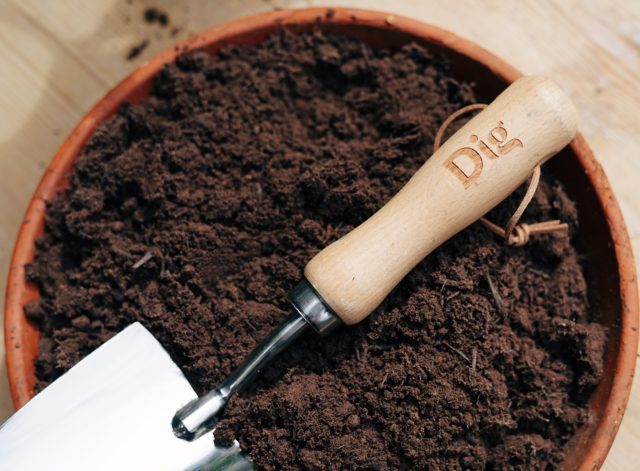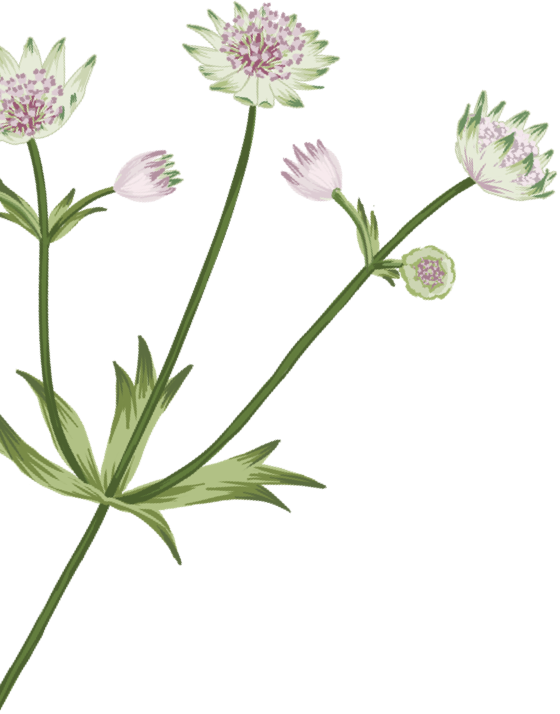For us, birdwatching and gardening go hand in hand. Whether it’s looking out of your kitchen window into your garden and onto a bird feeder or whether it’s noticing a robin accompanying you as you go about your garden jobs for the weekend, birds are synonymous with our gardens – not least because they provide them with a safe habitat, food and refuge. As well as being a vital data collection exercise (which sounds very serious) the RSPB Big Garden Birdwatch is also a great activity for children and adults and a gentle way to spend an hour in these quieter gardening months. Here are our top tips on where to begin with joining in this incredible, long-running science project and making a start on becoming an avid garden birdwatcher.
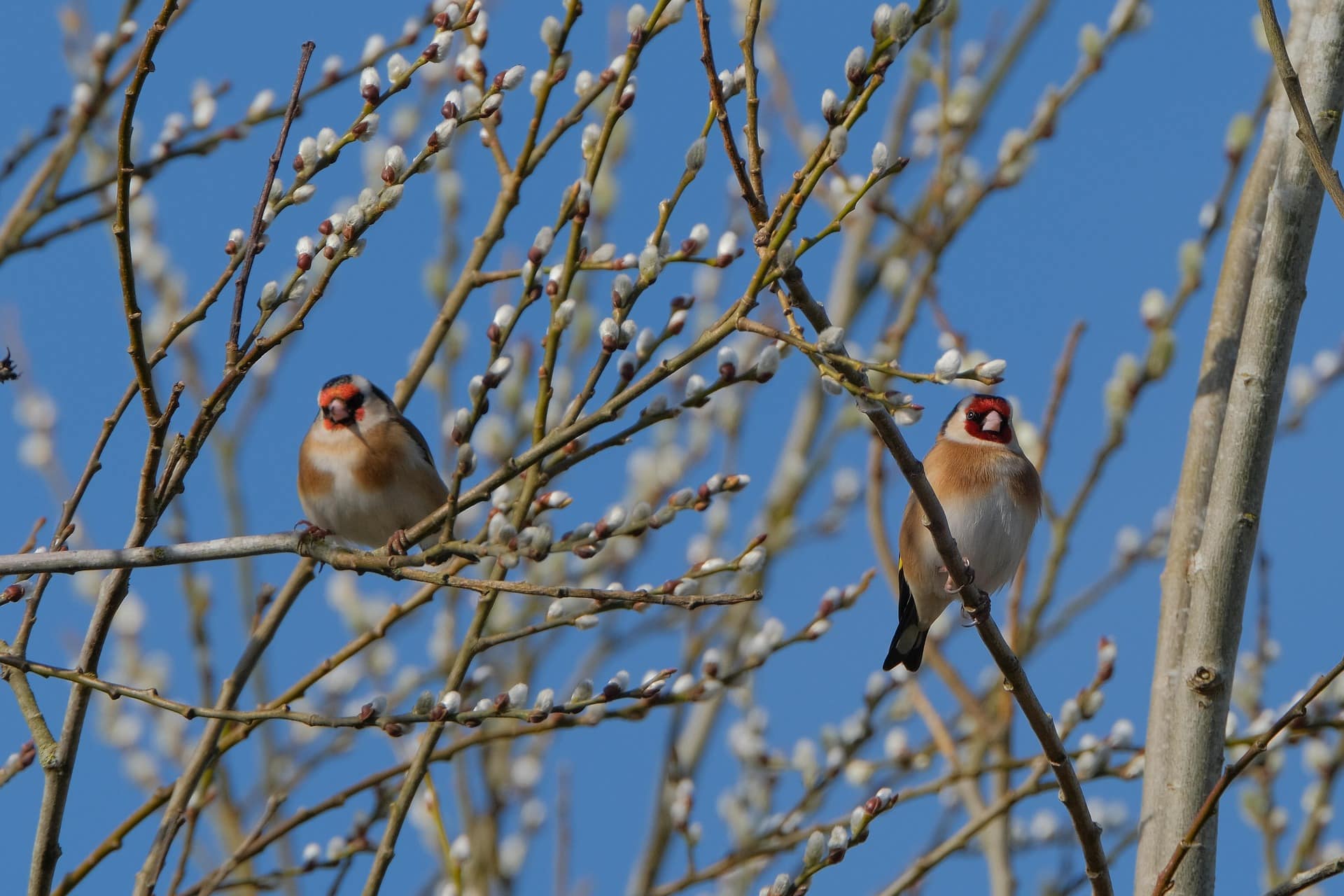
A pair of Goldfinches, often spotted in flocks right at the very tops of trees.
Set up shop:
- Find a comfortable vantage point: A window seat, a garden bench, or an upstairs window are all good options. The key is to remain still, as much as humanly possible so as not to scare anything away.
- Wrap up: If you’re birdwatching outside, even if it’s not that cold, remember to layer up. After an hour, you’ll definitely feel it. A hot drink in a flask never goes amiss too.
- Consider the birds: It might sound obvious, but choose a location that overlooks your bird feeders, bird baths, or areas with dense vegetation where birds might be hiding.
Tools of the trade:
- A notebook and pencil: A basic, but very important for recording your sightings – because we hope you’ll see
- A bird identification guide: A good bird book or online guide with pictures is essential. We really like the Merlin Bird ID app which can identify birds from multiple choice questions, sound recordings and even pictures.
- Binoculars: Optional, but they will definitely enhance your viewing experience and help with trickier identification.
Feed the birds:
Putting out food for birds, whether on a bird table or in a feeder, will, over time, encourage birds into your garden. It’s quite possible though that, if you put some out this week or this weekend, the birds may not find them in time. Sometimes it can take over a year for a bird feeder to become an established visiting spot for local birdlife. However, that doesn’t mean this isn’t a good reason to start. Feeding local birdlife provides them with a vital food source, particularly in the winter months, and with a declining population, they need all the help they can get.
Gather the data:
The basic principles of the Big Garden Birdwatch are to document every different bird you see, trying not to document the same bird twice, and sharing the data with the RSPB to help them build a picture of the birdlife in the UK across a single weekend. The Big Garden Birdwatch has been taking place since 1979 and, as a result, there is now an immense pool of data that gives the RSPB a unique read on how local wildlife is faring year to year.
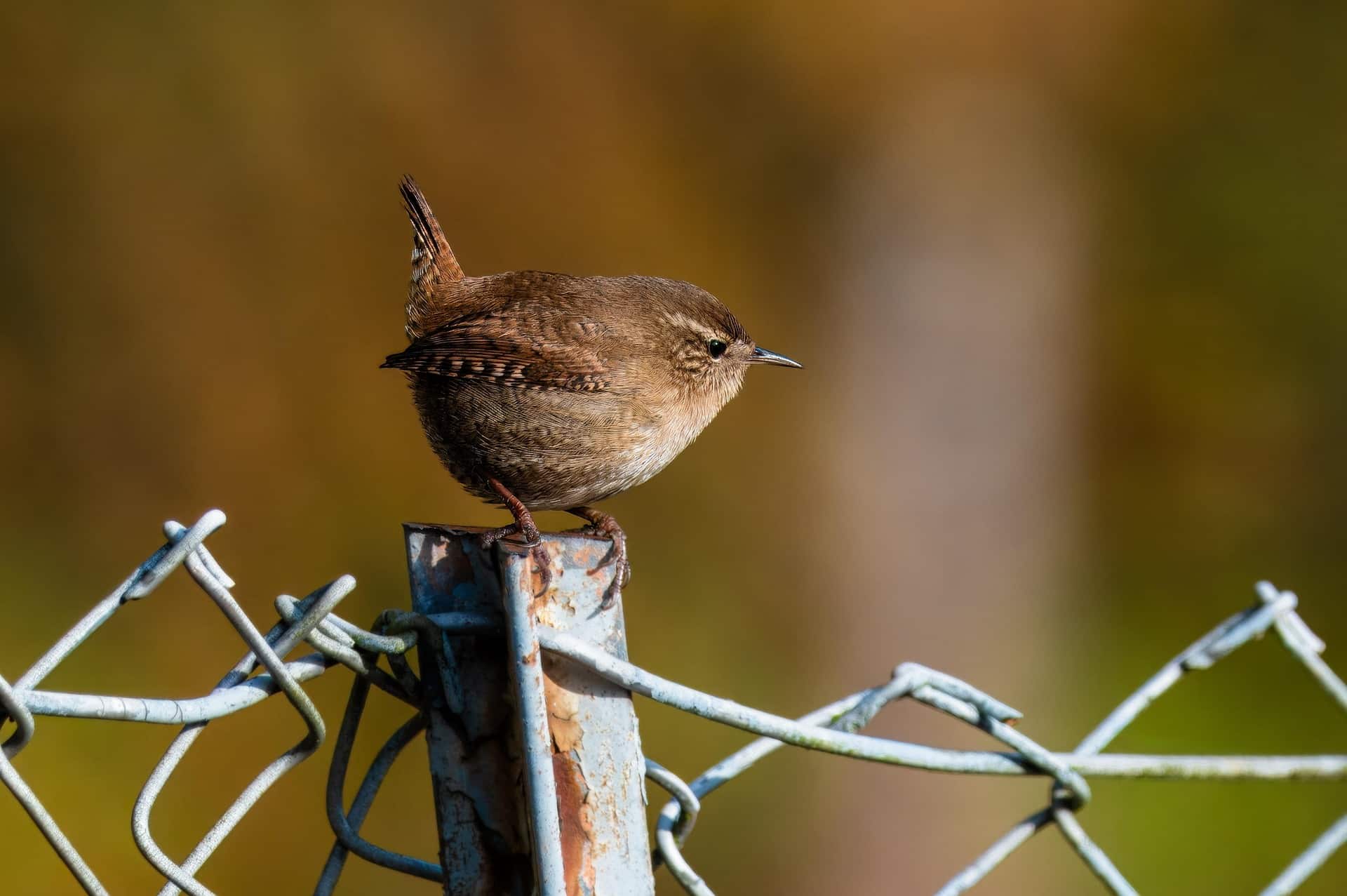
Though you might not often see one, Wrens are the most common bird in the UK.
Key things to remember:
- Spend an hour watching the birds: Note down the species you see, the number of individuals, and any interesting behaviors.
- Don’t worry if you can’t identify everything: Take a picture or note down any distinguishing features and use your guide or an app later.
- Take a load off! Relax and and enjoy the experience. It’s mindful, peaceful and even if you don’t see very much, a rare opportunity to sit and simply enjoy your outdoor space.
Submit Your Results:
Everything you need to know to submit your data, as well as FAQs, a helpful guide, and plenty more up to date information can be found here on the RSPB website: https://www.rspb.org.uk/whats-happening/big-garden-birdwatch/faqs
With birdlife, in many respects, on the decline – due to habitat loss, climate change, and other external factors, our gardens are a crucial player in helping to protect and encourage birds in the UK and therefore well worth cherishing and nurturing. For some advice on how to improve your garden for local wildlife, see our latest jobs for winter.
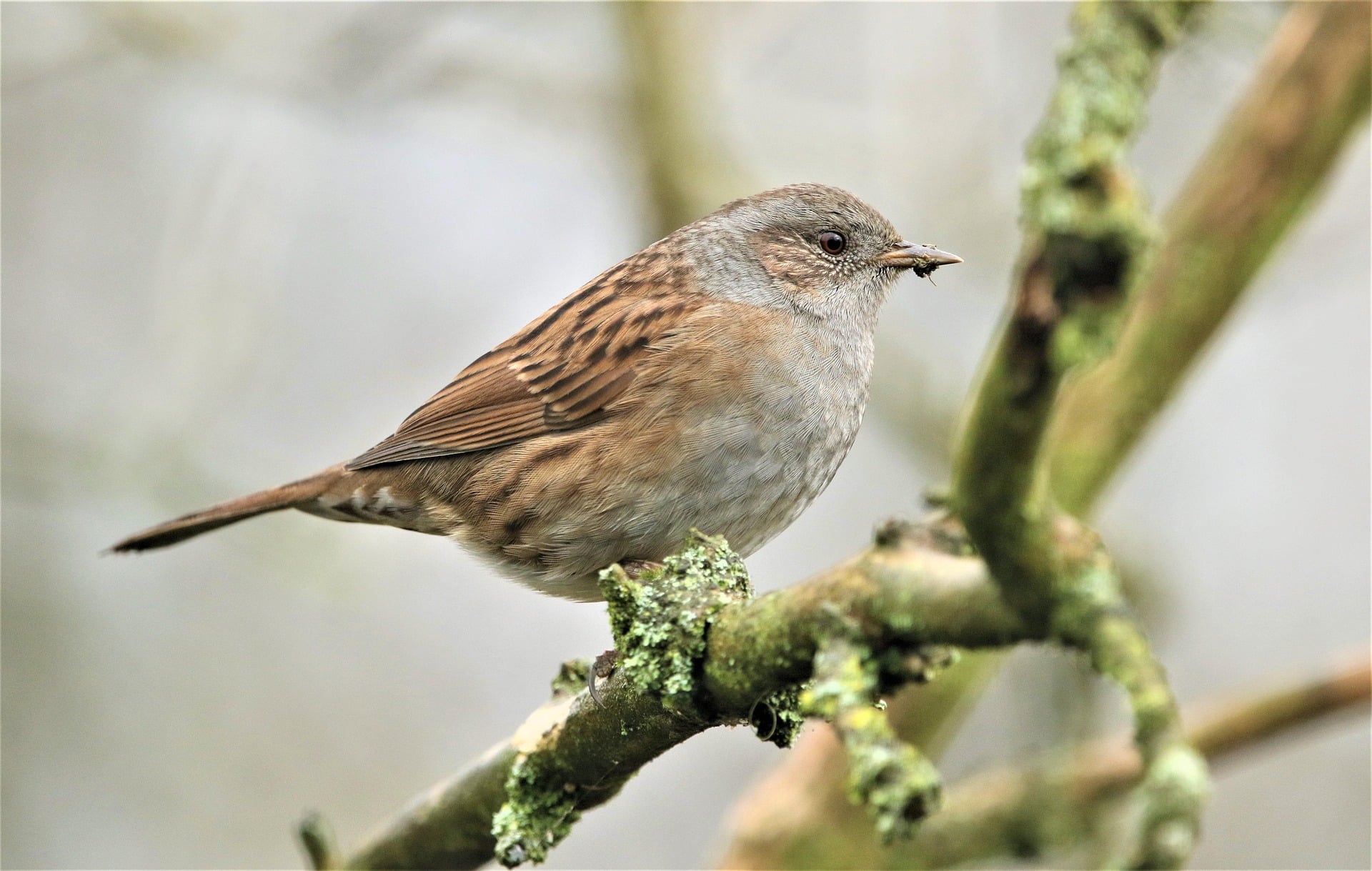
The very underratedly beautiful Dunnock

